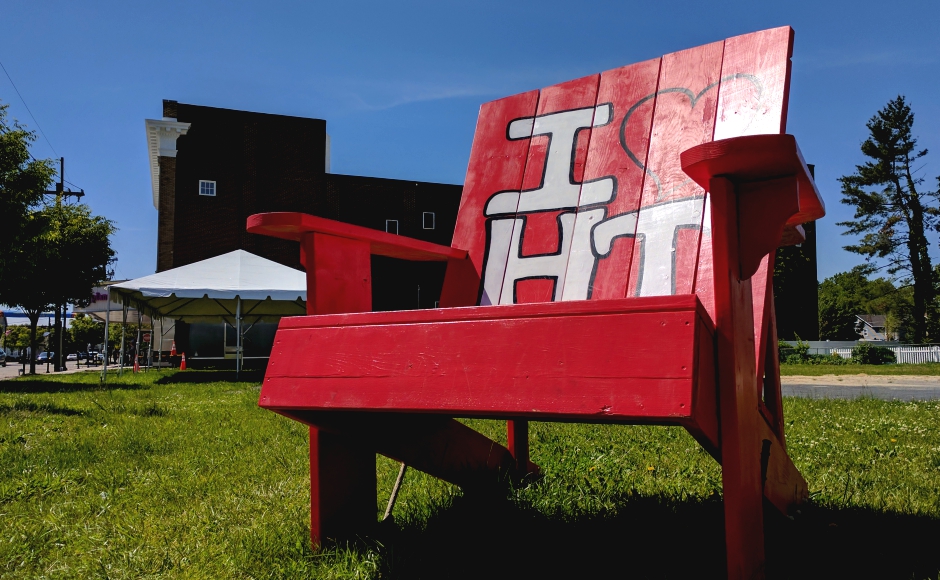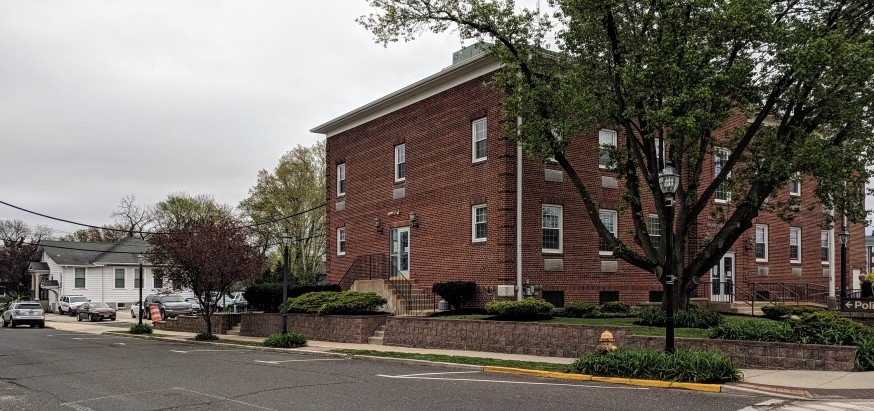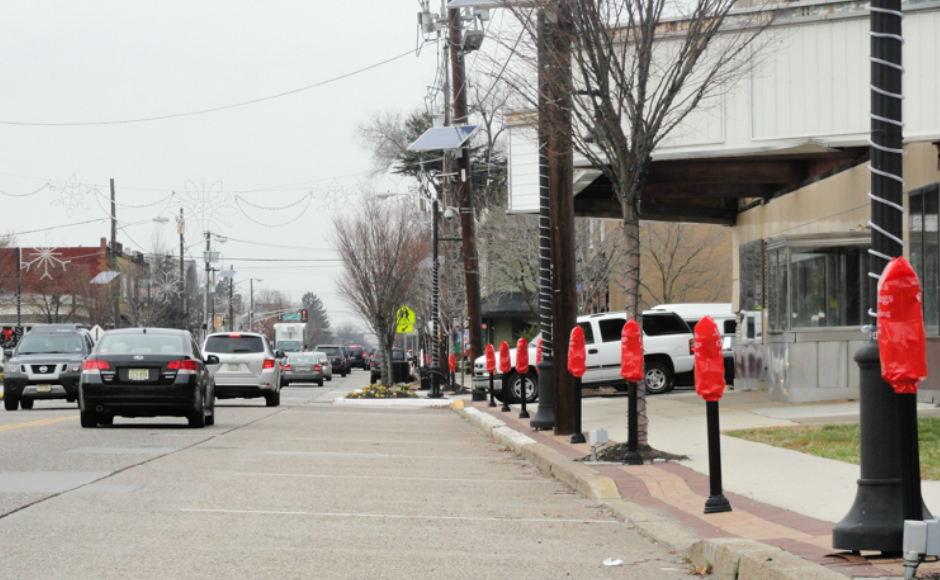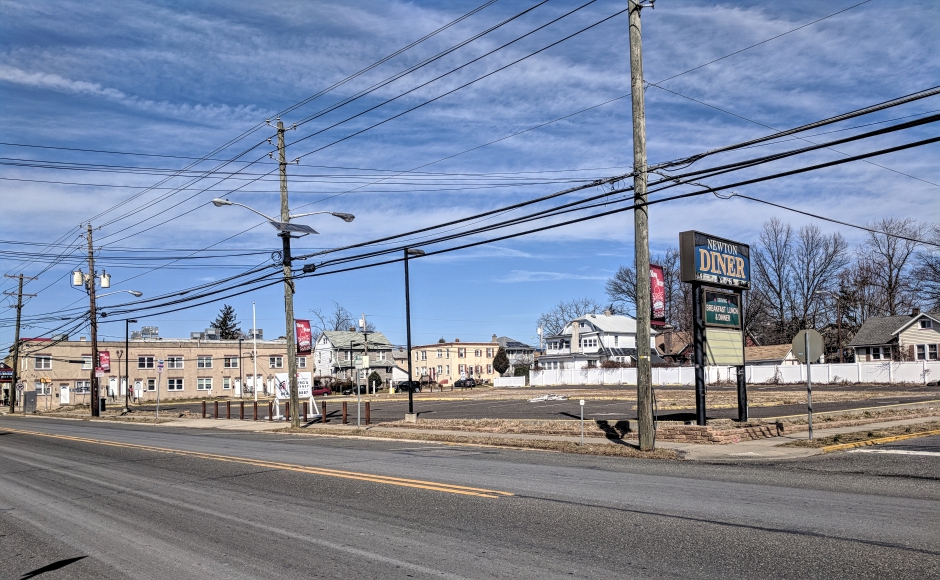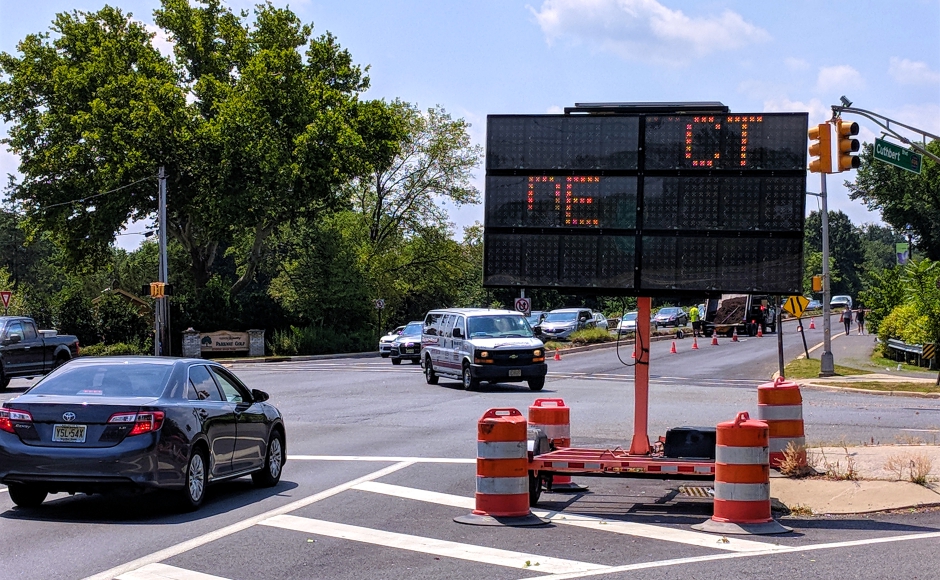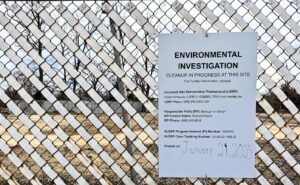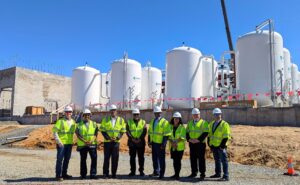The revised document also issues guidance on parking, redevelopment, and environmental concerns in a community where households are getting older and smaller, on average.
By Matt Skoufalos | December 17, 2019
Once every decade, New Jersey municipalities are required by state statute to produce a comprehensive review of their Master Plans.
These guiding documents establish goals and recommendations that provide a reference point for what’s to come in the following 10 years.
Local governments aren’t obligated to undertake any specific actions by adopting these updates, but they do provide an indication of existing challenges and priorities.
The current Haddon Township Master Plan was last updated in 2008. This year’s re-examination marks the second time the local government is revisiting that original document since it was adopted in 1999.
This latest update to the document describes a community that is largely built out, with potential for more housing; which contains significant environmental resources that are a boon and yet must be shrewdly managed; and which could stand to pivot from its historic, vehicle-intensive transit plan to one that makes space for bicycles and pedestrians.
Prepared for the Haddon Township Planning Board in late November 2019, the Master Plan update was officially introduced into public record at the December 16 meeting of the governing body. What follows is a recap of its most salient points.
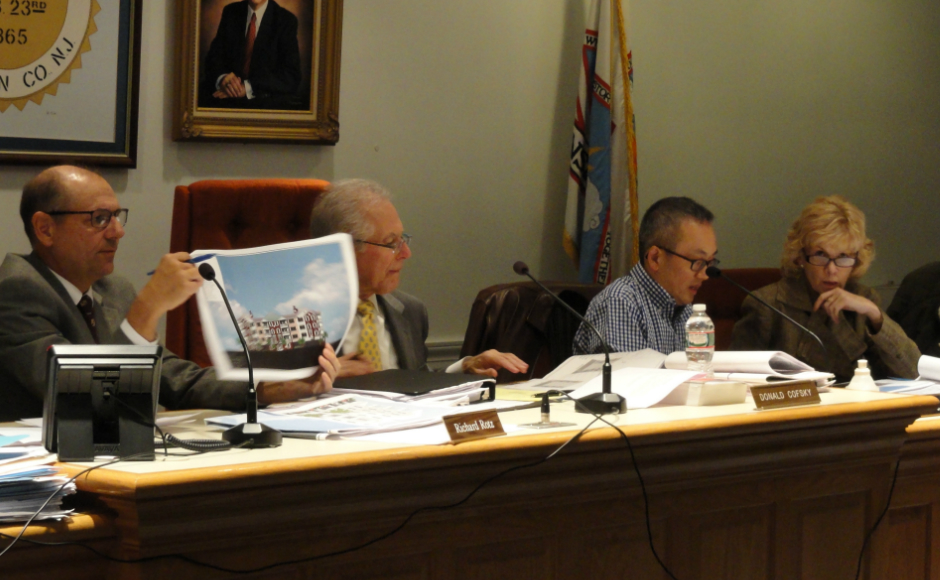
Haddon Twp Planning and Zoning Board reviews the Haddon Towne Center redevelopment plans. Credit: Matt Skoufalos.
Land use
One of the biggest issues identified in the update involves property developer tear-down/rebuild behavior previously identified in neighboring Haddonfield and Collingswood.
As a result, it’s one of the things most likely to be remedied by a revision of local ordinances in the coming year.
“Much of the current construction of new, single-family homes in the Township is due to the approval of minor subdivisions, creating minimally developable but technically approvable lots, and the construction of homes on existing vacant lots, randomly scattered throughout the densely developed portions of the Township,” the report read.
“Many of these vacant lots are located between existing homes and provide minimal land area to adequately address proper drainage and grading associated with new construction.
“Because of this type of development, the Township is currently considering amending the permitted density and bulk requirements of the R-1 and R-2 zones,” the document read.
“There are valid concerns with overburdening the existing municipal infrastructure and concerns over grading and drainage issues on lots having antiquated minimum standards for lot area and building setbacks.”
The Master Plan update recommends decreasing the permissible impervious lot coverage of R1-zoned properties (10,000 square-feet) to half the lot size, and that of R2-zoned properties (6,000 square-feet) to 60 percent, the better to manage stormwater issues and reduce the impact of overflow into neighboring properties.
Haddon Township Commissioner Ryan Linhart said the township government is evaluating its zoning ordinances “from a holistic perspective,” and that this specific issue “will be contemplated within the year.”
Another potentially significant complication in local land use law that the document raises, but doesn’t offer much guidance about, is the question of short-term rentals; i.e., the prevalence locally of third-party services like VRBO and AirBnb, which have generated a variety of policy responses locally and across the country.
Parking issues
Commercial land use along Haddon Avenue “first evolved more than a century ago… along what was one of the few major roads at that time… where pedestrian traffic was more prevalent and motor vehicle ownership and use [did not yet exist],” the report read.
“Off-street parking was not yet contemplated in the early 1900s for businesses along Haddon Avenue, and buildings were constructed close to the roadways with little or no land area behind the buildings… Today, in some instances, existing businesses struggle to provide adequate parking facilities for their customers in the downtown business area.”
That observation squares with concerns that smaller businesses have had trying to meet local parking standards in the central business districts of Haddon Township, particularly as their properties may not include any onsite parking. Prior attempts to address the question were undertaken by the local government in 2017, and the Master Plan update recommends that the local “planning board and governing body should continue to address this situation.”
Linhart said he’s hopeful that remedies will be swift in coming, the better to attract and retain small businesses in town.
“The intention is for the township to reduce and potentially eliminate parking minimums for retail and food operating businesses in the business district in order to reduce the friction for new businesses to come in,” he said.
“As it stands, all these requirements hinder new businesses coming into the area,” Linhart said. “The goal is to draw more foot traffic, and more businesses will do that.”
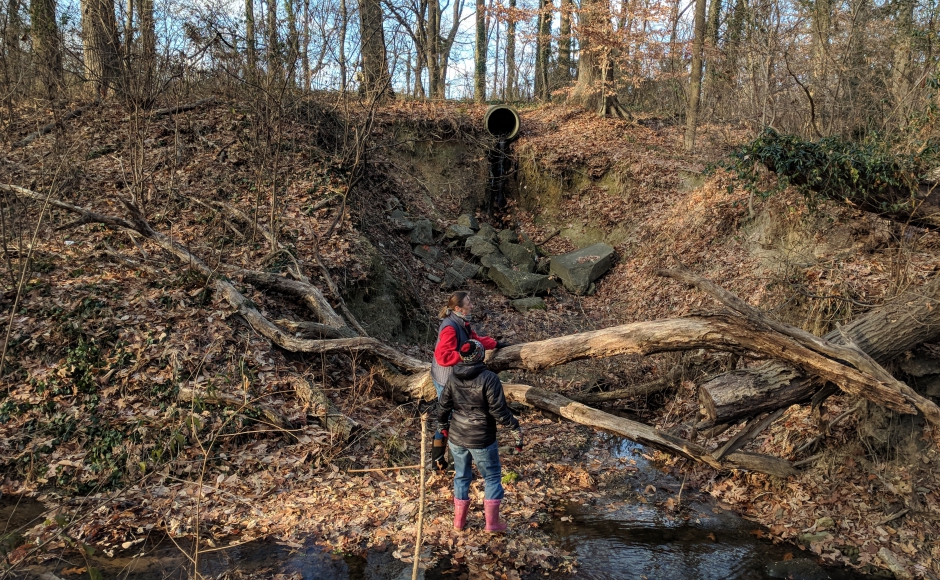
An outfall from Paul VI Catholic High School that environmentalists say is principally responsible for sediment deposits in Newton Lake. Credit: Matt Skoufalos.
Stormwater management
The most significant and overriding issue identified throughout the Master Plan update is local stormwater management.
Multiple citations throughout the document make mention of the vulnerability of Haddon Township to this issue.
These include notes that “substantial portions of the township along Cooper River, Newton Creek, and various tributaries are considered flood hazard areas and are within the limits of 100-year floodplains.”
Or that preserving Saddler’s Woods, “the premier environmental resource in the township,” means addressing the impact of stormwater overflow on the “rare, old-growth forest.”
The report also mentions that the township “has no mitigation options in place” for development proposals that don’t meet current state environmental regulations, and recommends that it ought to formally require a “grading plan” for all future development: a survey of land within 50 feet of any proposed development area that includes current information about existing stormwater and drainage.
“Grading plans are something that [township engineer] Greg [Fusco] has been asking for in just about every application that’s come through the door, but it’s not required by ordinance,” Robert Smith of Key Engineers told the township planning board at its December 16 meeting. “We need to make it required.”
“We’ve had structures go up that have not had grading plans that have had a negative impact on neighboring properties,” Linhart said. “There are also houses that shouldn’t have been built in a floodplain.
“A soil grading study is just to understand what is underneath the subsurface of the soil to know that whatever construction that will be built there is on essentially stable ground,” the commissioner said.
“A lot of the issues we have in town, some of the flooding is the result of the water being redirected from houses, from roofs, driveways, concrete, to an adjacent property,” Linhart said. “By having a soil study, you’re showing that you understand the flow of water.”
Another component of state environmental mandates requires communities to improve public awareness around things that contribute to stormwater pollution. Although Haddon Township has an active roster of conservationists, the local government can do more to incentivize resident behaviors, Linhart said.
Redevelopment goals
The Master Plan update also recommends incentivizing the redevelopment of dormant business and residential properties, including designating the Haddon Avenue and White Horse Pike corridors as areas in need of redevelopment.
“The goal is to use redevelopment tools we have,” Linhart said.
“Putting an overlay over the entire [Haddon] Avenue would be problematic, but to pick out parcels that might need work is helpful,” he said.
The commissioner identified the former Newton Diner as an “ideal” target for use of a redevelopment overlay to accelerate its return to productive use.
The Master Plan update also mentions whether the PATCO Westmont Speedline station should be designated a transit-oriented development (TOD) or transit-oriented village, creating “a special downtown residential zone” that’s eligible for additional grant funding.
“It could help us reach our [affordable] housing obligations, and as a result of that, in building more mixed-use properties, potentially with external funding, could be a great benefit to the Avenue,” Linhart said.
Perhaps the most interesting, if far-flung, projection in the document involves the township police department and municipal buildings, which the plan update describes as “substandard.
“The township may want to consider the acquisition of additional adjacent lots, which front along Haddon Avenue and Center Street, to create a town square/municipal complex,” the document noted.
Linhart stressed that such a move is mostly conceptual, and has no fixed timeline, as none of those properties are available.
“Those opportunities aren’t there right now,” the commissioner said.

Clockwise, from top left: Haddon Township poll workers Alex Currie, Dan Linderman, Betty Hubler, and Millie Gentile in 2014. Credit: Matt Skoufalos.
An aging population
The most significant demographic note in the Master Plan update identifies Haddon Township as home to households that are older than the county average (median age of 42 versus 38), and, following a national trend, getting smaller.
(The median Haddon Township household includes 2.36 people, with the average family size at 3.04 people.)
Although the local population is expected to remain stable throughout next decade,
these smaller, older households will increase demands for housing and services for the elderly, including public transit, the report said.
Linhart said that data point illustrates “that people don’t necessarily want to leave town; that they enjoy living here.
“It also identifies the need for that missing middle [housing] element for people in a transitional stage of their lives,” he said. “I think as there’s more housing opportunity, that will level off.
“I also think people are buckling down in this economy,” Linhart said. “People are apprehensive to move because they don’t know what to expect next.”
Traffic/transportation
In addition to nominal mentions of how to manage future considerations like autonomous vehicles on township streets, and where electric vehicle (EV) charging stations would best be situated (potentially in larger shopping plazas), the Master Plan update recommends working with state and county planning agencies to reconstruct its largest intersections as needed.
“Since traffic congestion occurs primarily along the state highways and county roads, it is very difficult for the township to control the traffic along these roads,” the document read.
“Motorists bypass these congested roads by traveling through adjacent residential streets due to the delays caused by the congestion.”
The document also stressed the importance of multimodal travel availability, suggesting that the Saddlers Woods tract “could be the launching point for a bikeway system that would provide another mode of transportation through the municipality, and should be pursued.”
Finally, the document encourages “enhancement of pedestrian amenities” in the township business districts, the better to “enhance the[ir] attractiveness and vibrancy.”
Much of the township sidewalk system “is heaved and broken due to its age and the maturity of trees growing behind the curbline,” the report noted. These, it said, “should be inspected and replaced as necessary as part of annual capital improvements, as is the case with roads.”
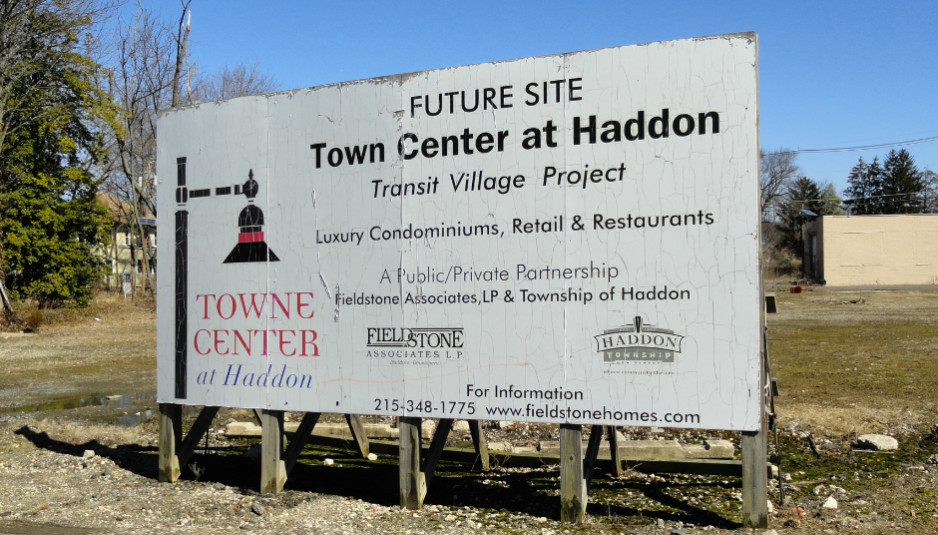
The Haddon Towne Center was one of the largest brownfield sites in the state. Credit: Matt Skoufalos.
Environmental needs
In addition to updating local ordinances to include language identifying and promoting the use of green building technologies, the Master Plan update recommended that the township catalogue and inventory those sites throughout its borders which are environmental hazards.
Haddon Township is home to “18 known contaminated active sites” listed within the state Department of Environmental Protection (DEP), according to the report; 17 are commercial properties, with some being current or former gas stations that have “underground-storage-tank-related issues.”
These could be remediated with state funds gathered through the NJ DEP Hazardous Discharge Site Remediation Program (HDSRF), which provides as much as $3 million annually for assessments and investigations of such sites. Additional low-interest loans and matching grants are available to property owners who can demonstrate a comprehensive redevelopment plan and realistic opportunity to redevelop the sites within three years of application.
Finally, the update also points out that the township sanitary sewer system is “of advanced age,” and affected significantly by inflow and infiltration of stormwater. It recommends that the local government continue to dedicate capital funds to improving its roadways, sewer, water, and stormwater infrastructure.

